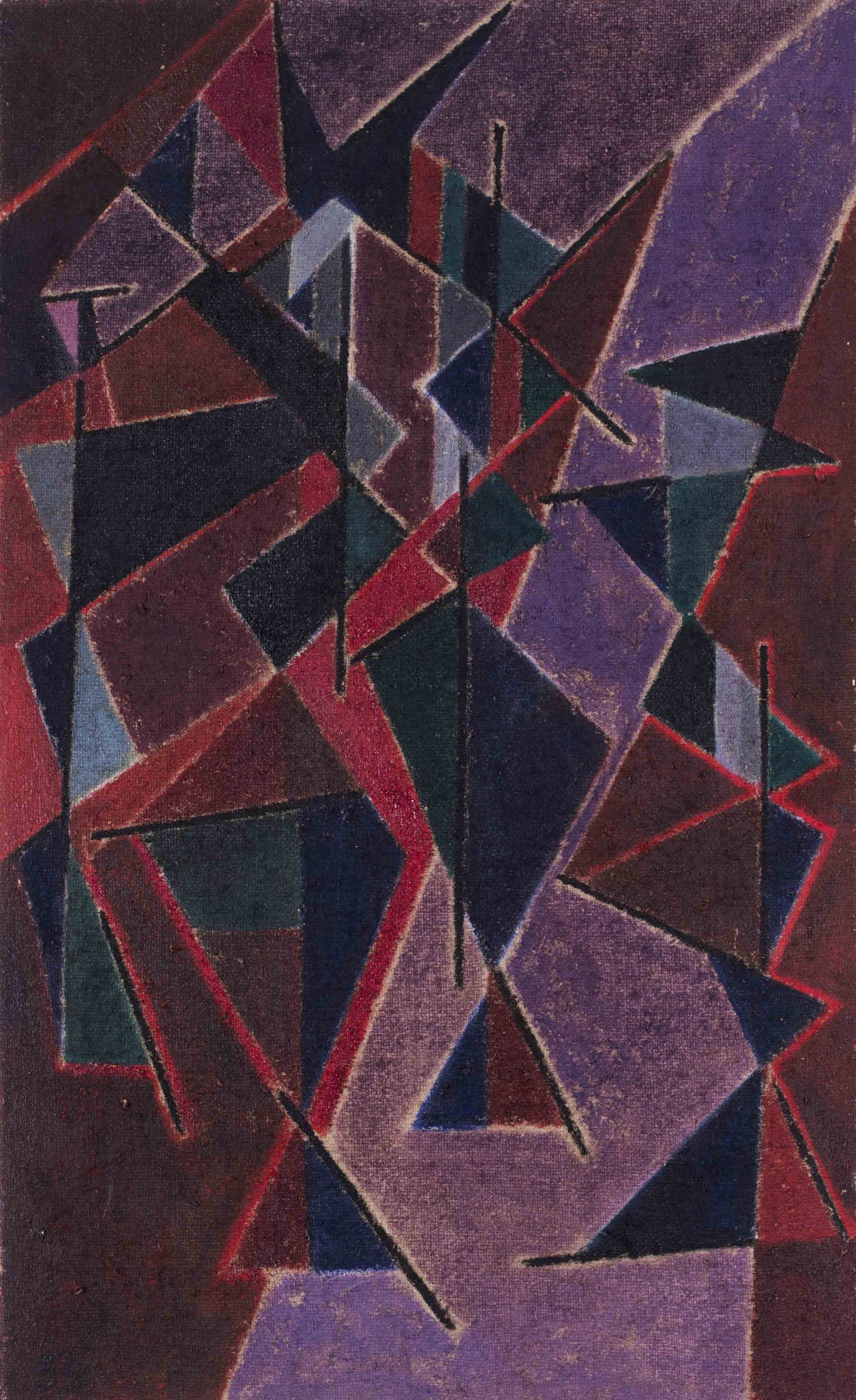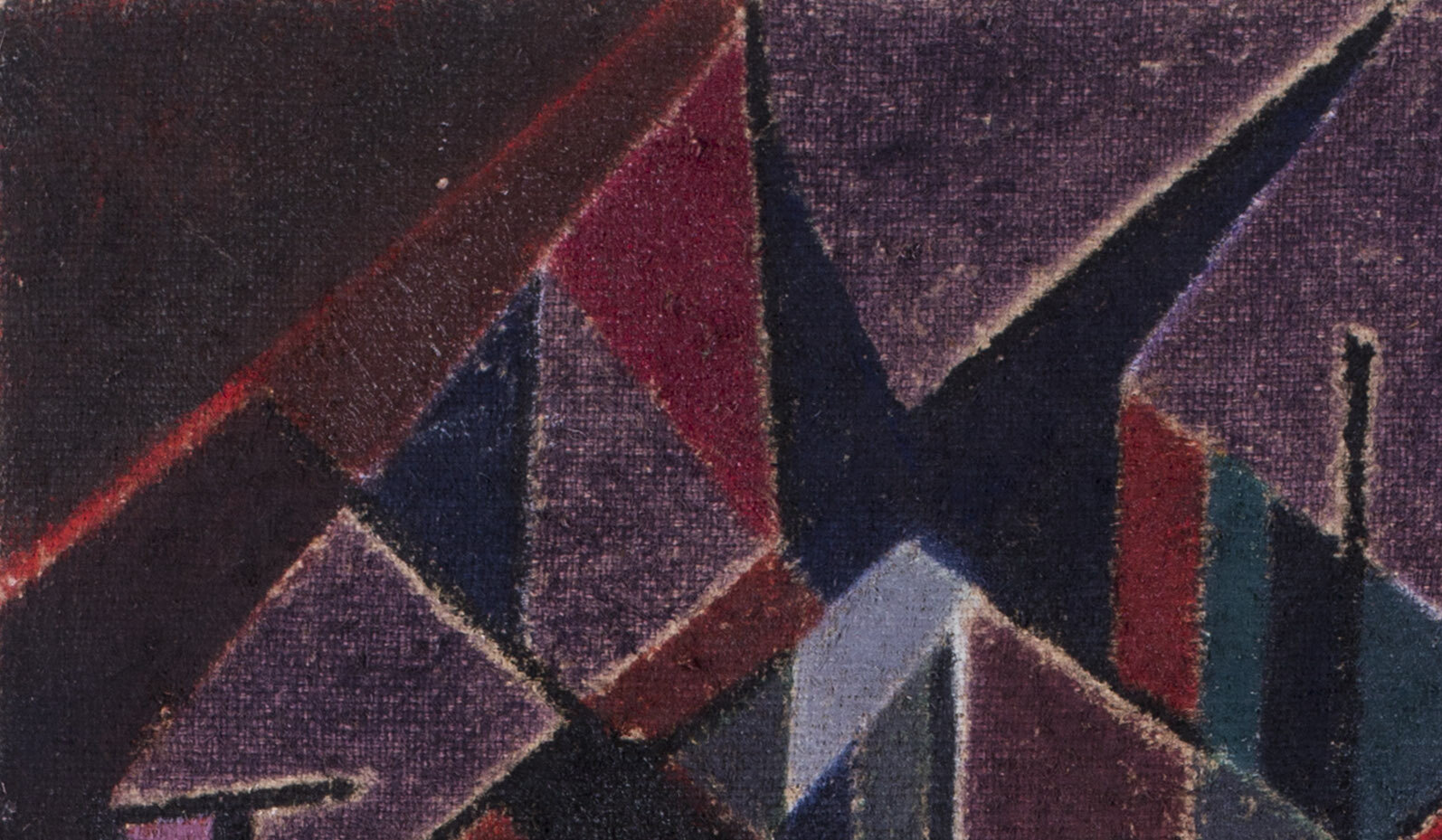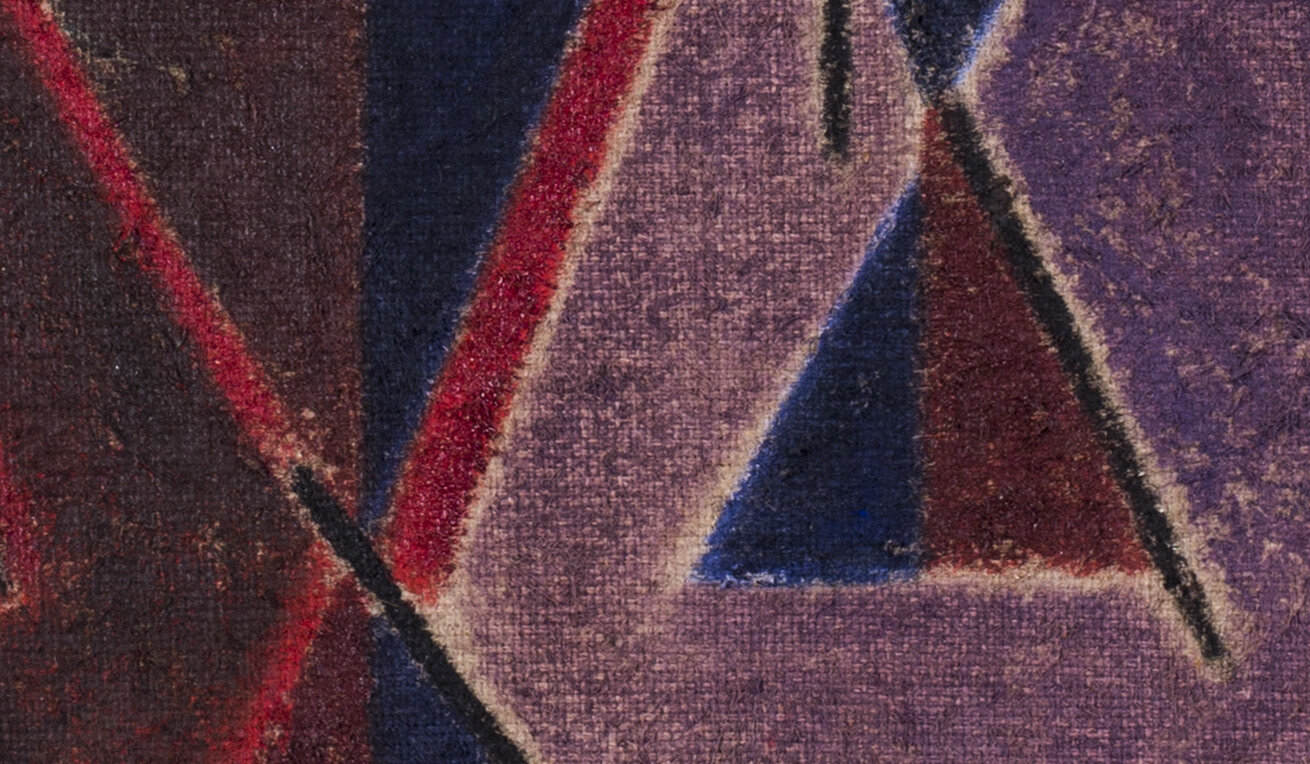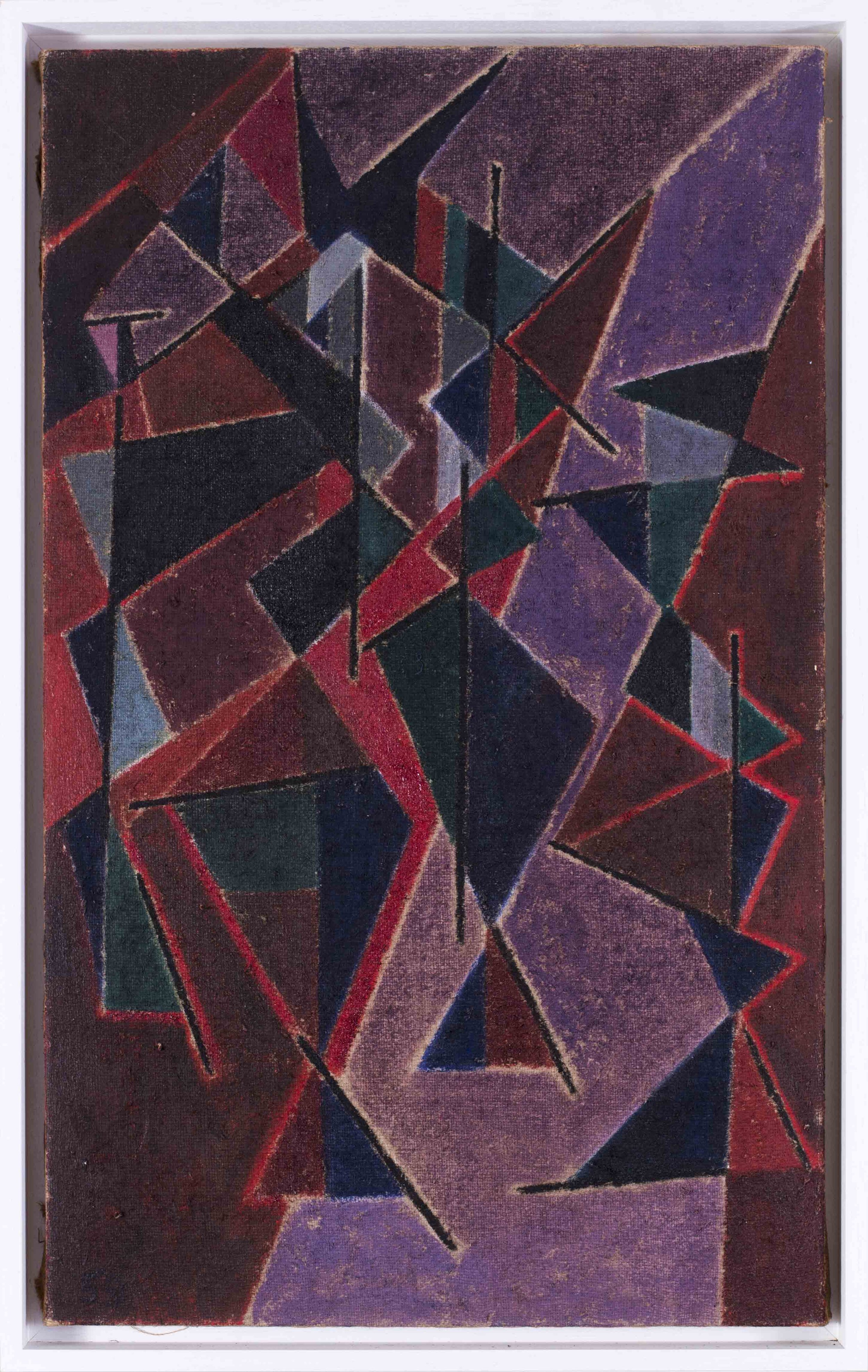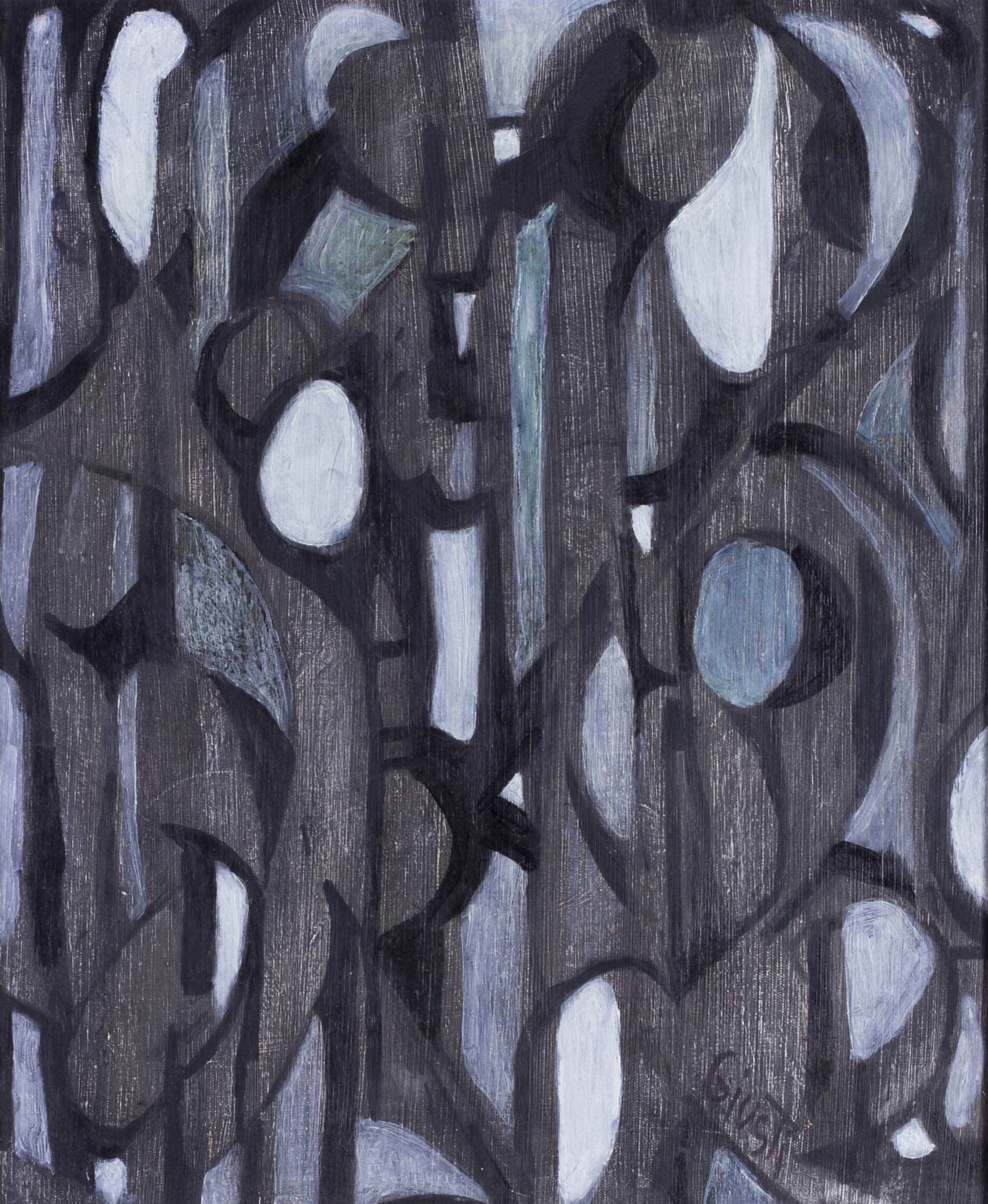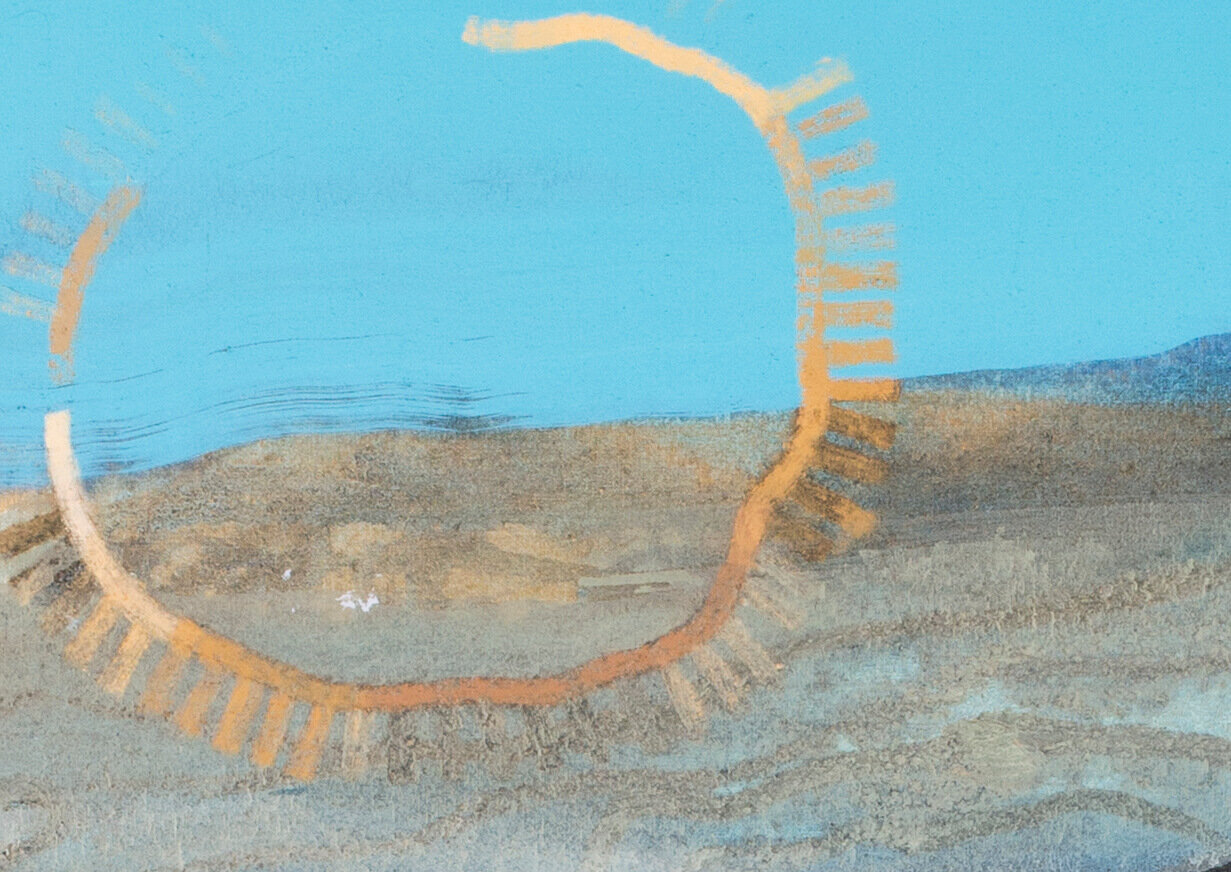 Image 1 of 8
Image 1 of 8

 Image 2 of 8
Image 2 of 8

 Image 3 of 8
Image 3 of 8

 Image 4 of 8
Image 4 of 8

 Image 5 of 8
Image 5 of 8

 Image 6 of 8
Image 6 of 8

 Image 7 of 8
Image 7 of 8

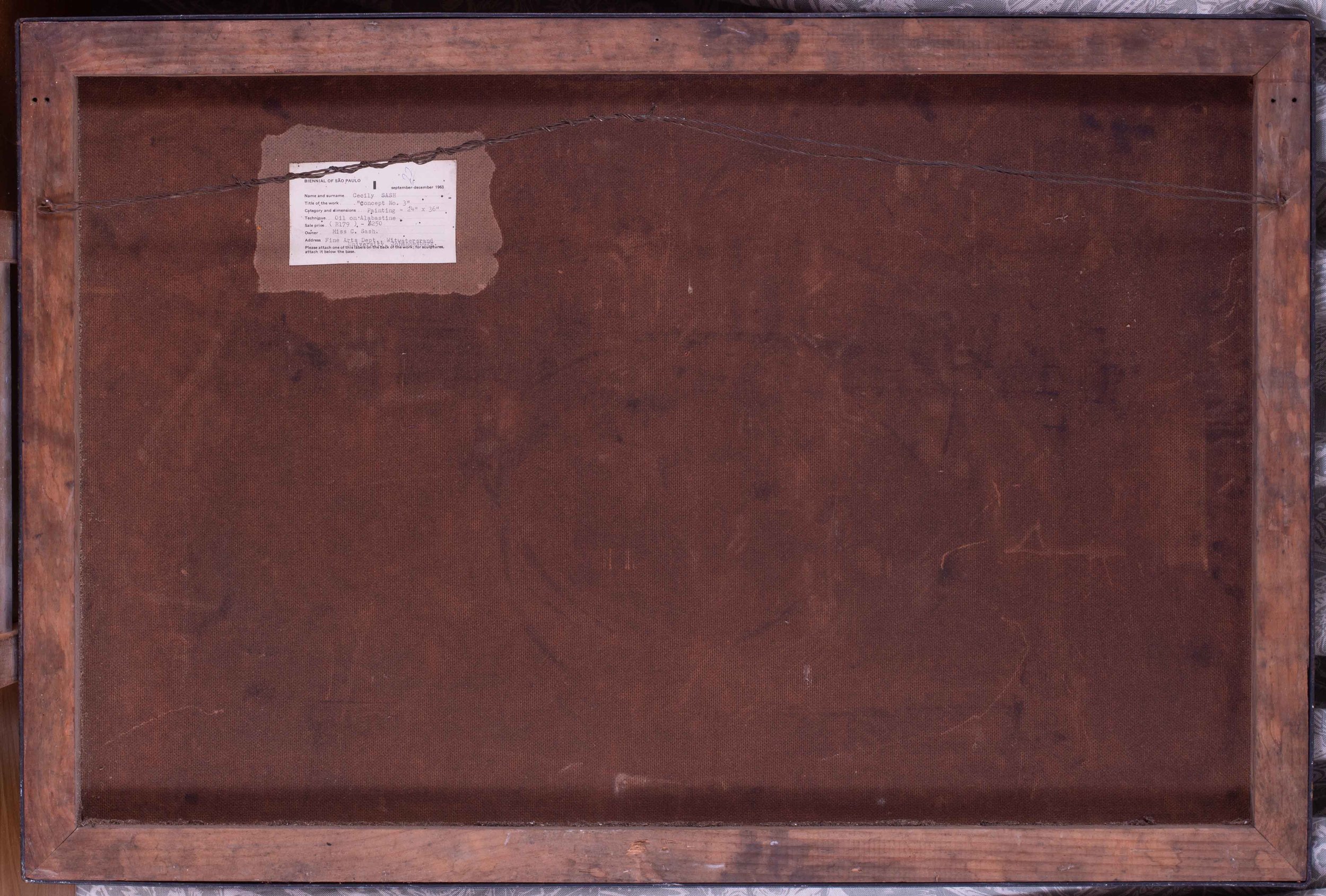 Image 8 of 8
Image 8 of 8









SOLD
Cecily Sash (South African, 1925 - 2019)
Concept No. 3
Oil on board
Signed ‘SASH’ 63 (upper left) with further details on a label to the reverse
24.1/8 x 36 in. (61.3 x 91.4 cm.)
Exhibited: Sao Paolo Biennale, Sept – Dec 1963
Cecily Sash was a renowned artist and teacher. In her native South Africa she completed several mosaic panels still on display in public buildings, and became a major figure in the cultural landscape.
She lectured for nearly 20 years in the fine art department of the University of the Witwatersrand in Johannesburg and, according to the art historian Esmé Berman, “Few South African artists of her generation exercised more influence”.
In the 1970s Cecily settled in Britain, feeling threatened by the apartheid regime, and she lived for the rest of her life in the Welsh Marches. She continued to produce and exhibit in the UK, in France, and back in South Africa – all the while changing and developing her style and at the same time teaching both children and adults.
Daughter of Bessie (nee Liverman) and Max Sash, she was born in Delmas in the Transvaal. Her father was a doctor, but at an early age Cecily showed a prodigious talent for art. She studied under Maurice van Essche at the Witwatersrand art school, and then, in London in the late 1940s, at Chelsea Polytechnic under Henry Moore, and Camberwell School of Art with Victor Pasmore.
While teaching at Jeppe girls’ high school in Johannesburg, she began to arouse the interest of educationists and received commissions for mural designs at sites such as the Transvaal provincial administration building in Pretoria, the University of the Witwatersrand, and the Transvaal Institute of Architects. Her styles were initially decorative and representational, in mosaic, paint or tapestry, but she began to put more emphasis on semi-abstract qualities.
In London she was one of 11 artists included in the South Africa artists’ exhibition at the Grosvenor gallery in 1965, and her first solo show was held at the Boundary gallery in 1978.
Her work was shown at the Sao Paolo, Venice and Florence biennales. Two studies of her work have been published: Cecily Sash: Working Years (1999) and Cecily Sash – Artist and Teacher (2013).
Cecily Sash (South African, 1925 - 2019)
Concept No. 3
Oil on board
Signed ‘SASH’ 63 (upper left) with further details on a label to the reverse
24.1/8 x 36 in. (61.3 x 91.4 cm.)
Exhibited: Sao Paolo Biennale, Sept – Dec 1963
Cecily Sash was a renowned artist and teacher. In her native South Africa she completed several mosaic panels still on display in public buildings, and became a major figure in the cultural landscape.
She lectured for nearly 20 years in the fine art department of the University of the Witwatersrand in Johannesburg and, according to the art historian Esmé Berman, “Few South African artists of her generation exercised more influence”.
In the 1970s Cecily settled in Britain, feeling threatened by the apartheid regime, and she lived for the rest of her life in the Welsh Marches. She continued to produce and exhibit in the UK, in France, and back in South Africa – all the while changing and developing her style and at the same time teaching both children and adults.
Daughter of Bessie (nee Liverman) and Max Sash, she was born in Delmas in the Transvaal. Her father was a doctor, but at an early age Cecily showed a prodigious talent for art. She studied under Maurice van Essche at the Witwatersrand art school, and then, in London in the late 1940s, at Chelsea Polytechnic under Henry Moore, and Camberwell School of Art with Victor Pasmore.
While teaching at Jeppe girls’ high school in Johannesburg, she began to arouse the interest of educationists and received commissions for mural designs at sites such as the Transvaal provincial administration building in Pretoria, the University of the Witwatersrand, and the Transvaal Institute of Architects. Her styles were initially decorative and representational, in mosaic, paint or tapestry, but she began to put more emphasis on semi-abstract qualities.
In London she was one of 11 artists included in the South Africa artists’ exhibition at the Grosvenor gallery in 1965, and her first solo show was held at the Boundary gallery in 1978.
Her work was shown at the Sao Paolo, Venice and Florence biennales. Two studies of her work have been published: Cecily Sash: Working Years (1999) and Cecily Sash – Artist and Teacher (2013).
Cecily Sash (South African, 1925 - 2019)
Concept No. 3
Oil on board
Signed ‘SASH’ 63 (upper left) with further details on a label to the reverse
24.1/8 x 36 in. (61.3 x 91.4 cm.)
Exhibited: Sao Paolo Biennale, Sept – Dec 1963
Cecily Sash was a renowned artist and teacher. In her native South Africa she completed several mosaic panels still on display in public buildings, and became a major figure in the cultural landscape.
She lectured for nearly 20 years in the fine art department of the University of the Witwatersrand in Johannesburg and, according to the art historian Esmé Berman, “Few South African artists of her generation exercised more influence”.
In the 1970s Cecily settled in Britain, feeling threatened by the apartheid regime, and she lived for the rest of her life in the Welsh Marches. She continued to produce and exhibit in the UK, in France, and back in South Africa – all the while changing and developing her style and at the same time teaching both children and adults.
Daughter of Bessie (nee Liverman) and Max Sash, she was born in Delmas in the Transvaal. Her father was a doctor, but at an early age Cecily showed a prodigious talent for art. She studied under Maurice van Essche at the Witwatersrand art school, and then, in London in the late 1940s, at Chelsea Polytechnic under Henry Moore, and Camberwell School of Art with Victor Pasmore.
While teaching at Jeppe girls’ high school in Johannesburg, she began to arouse the interest of educationists and received commissions for mural designs at sites such as the Transvaal provincial administration building in Pretoria, the University of the Witwatersrand, and the Transvaal Institute of Architects. Her styles were initially decorative and representational, in mosaic, paint or tapestry, but she began to put more emphasis on semi-abstract qualities.
In London she was one of 11 artists included in the South Africa artists’ exhibition at the Grosvenor gallery in 1965, and her first solo show was held at the Boundary gallery in 1978.
Her work was shown at the Sao Paolo, Venice and Florence biennales. Two studies of her work have been published: Cecily Sash: Working Years (1999) and Cecily Sash – Artist and Teacher (2013).





